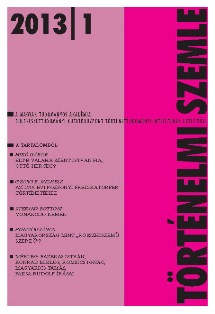Élt-e valaha Szent István fia, Ottó herceg? Egy ismeretlen 15. századi krónika tanúskodása
Did Otto, the son of Saint Stephen, ever live?
Author(s): Gábor MikóSubject(s): History
Published by: Magyar Tudományos Akadémia Bölcsészettudományi Kutatóközpont Történettudományi Intézet
Summary/Abstract: All of our medieval sources, which deal with the family of Saint Stephen, speak about the children of the king. However, it is only the existence of a single son, called Imre, which is accepted unanimously by the historiography. Although a late medieval tradition has maintained the name of one of the brothers of Imre, Otto, its authenticity is not beyond doubt. So far we have known two texts which contain the name of prince Otto: one of them is the Hungarian Chronicle (Ungarische Chronik) of Jakob Unrest, and the other is a Latin Saint Stephen sermon of the Franciscan preacher, Osvát Laskai. Both of them were written at the very end of the 15th century. Yet none of the publishers of the two texts was able to identify the source of the name Otto. Some historians – regarding the prince as the firstborn of the king – pointed to an „ancient”, now lost, legend of the king as the origin of the name. The chronicle containing short royal biographies, which has recently been discovered, is thus the third source preserving the name of prince Otto. Although it survived in copy from the end of the 16th century, its original text was prepared in the middle of the 15th, and its roots reach back even further in time. It contains important, sometimes verbatim textual parallels with the work of Unrest, and it is probable that Laskai also learned about the name of Otto from a similar chronicle. On the basis of comparisons with other Hungarian narrative sources, we are currently able to lead back the oldest layer of the chronicle to the middle of the 14th century, when it was apparently compiled from other narrations of a richer textual tradition. Although the chronicle does not prove the existence of prince Otto beyond doubt, it does underpin the authenticity of the tradition on account of both its genre and its identifiable models. Moreover, it proves the fact that it was not in hagiographical works but in chronicle narratives that the name was bequeathed on posterity.
Journal: Történelmi Szemle
- Issue Year: 2013
- Issue No: 01
- Page Range: 1-22
- Page Count: 22
- Language: Hungarian

